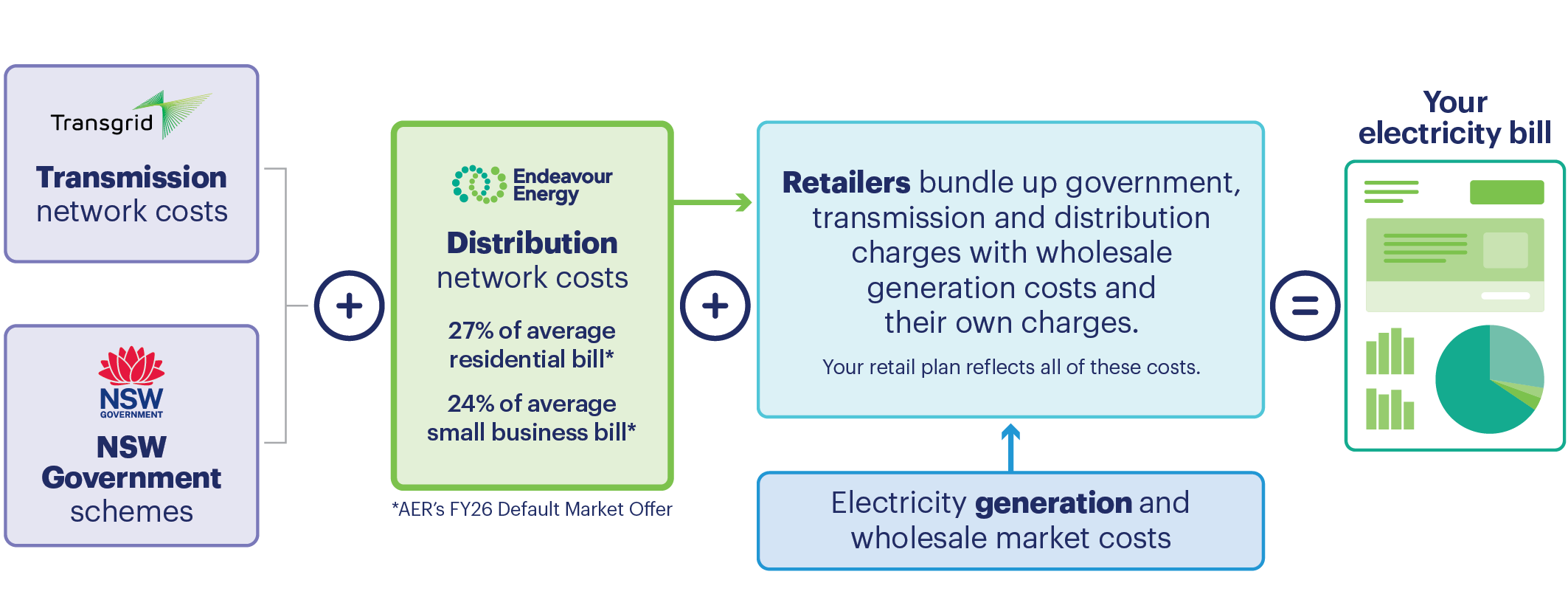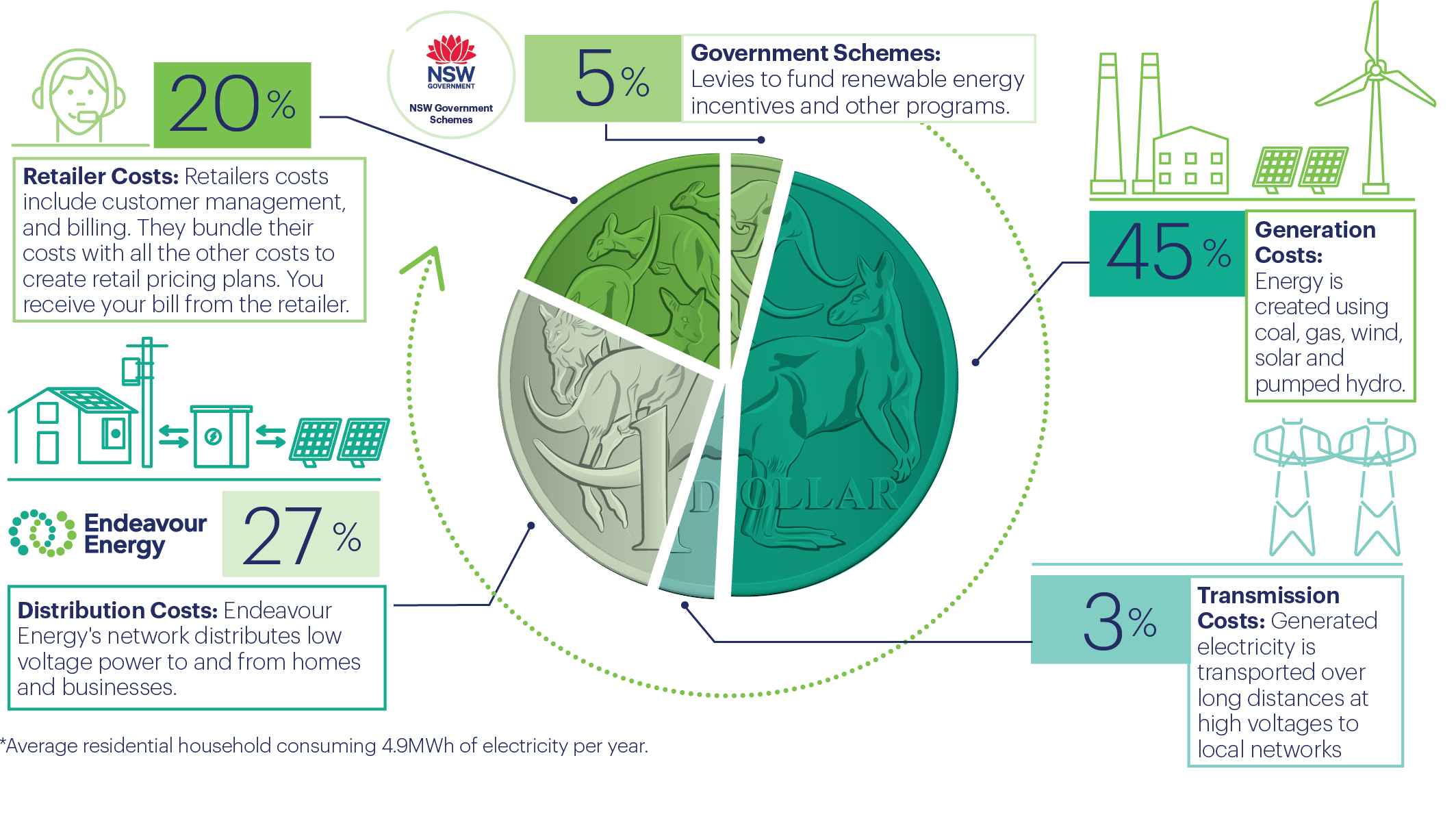Understanding your bill
Ever wondered what goes into the costs in your electricity bill? Here, we break down the key components to help you understand your charges, manage your usage, and take control of what you pay.
What are you paying for?
The electricity you use every day is delivered through a complex supply chain, which includes:
- generators including coal-fired power stations to renewables like solar, wind and hydro
- transmission networks transporting high-voltage power over long distances from large generators to distribution networks
- distribution networks which transform power to safe, usable voltages for homes and businesses
- energy retailers who sell you electricity.

Your electricity bill includes costs from every stage of the energy supply chain - covering generation, transmission, distribution, and retail services - to ensure electricity reaches your home or business.
See below for a breakdown of where your electricity dollar goes and how each part of the supply chain contributes to your bill.

How to save money on your electricity bill
Some costs on your electricity bill - such as network charges - are regulated to ensure fair pricing for everyone.
There are, however, simple steps you can take to lower your electricity bill.
The best place to start is choosing a retail plan that best suits your household or business needs.
And that’s just the beginning. See below for five key actions to help lower your electricity costs.
Who sets electricity prices
In NSW, electricity retailers determine their own prices.
These prices are based on various costs, including wholesale electricity prices, network charges (regulated by the Australian Energy Regulator), and retail costs.
Retailers offer customers electricity plans under two types of contracts:
Standard contracts
These have fixed terms and conditions that cannot be changed by the electricity retailer. If you haven’t switched retailers or updated your plan in a long time, you may be on a standard contract.
Under standard contracts, the price you pay is based on the Default Market Offer, set by the Australian Energy Regulator on 1 July each year, which caps electricity prices for residential customers and small businesses.
Market contracts
Market contracts include some fixed but also flexible terms and conditions. They typically:
- cost less than standard contracts
- offer discounts and renewable energy options (e.g. GreenPower)
- have a fixed duration
- can include exit fees if terminated early.
Retailers offer a wide variety of market contracts tailored to different customers choices and needs – it’s worth comparing options to find the best fit for you.
How to compare retail plans
The easiest way for you to find the most affordable and suitable electricity plan is by using the Australian Energy Regulator’s Energy Made Easy website. This user-friendly tool allows you to:
- compare your current plan with other retail offers
- identify better options based on your needs
- switch to a more competitive plan with minimal effort.
It’s always worth asking your retailer about their best available offer - you may find a plan that better suits your household or small business.